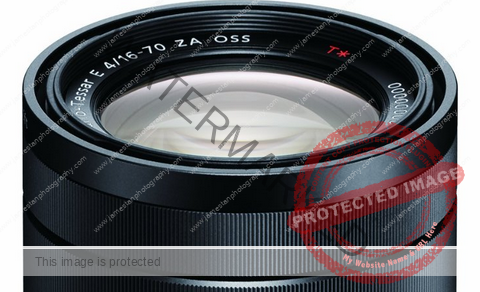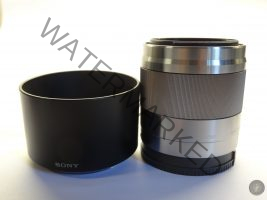IIn the previous posts, we discussed 5 Considerations Before Buy a Camera, 5 Reasons to Own a P&S camera, 5 Reasons to Own a Mirrorless Camera, and 5 Reasons to Own a DSLR camera. If you buy a Point and Shoot (P&S) camera, then congrats, you can start your photography journey immediately. However, if you want to buy a mirrorless camera or DSLR, you must have at least one lens to pair with your camera before starting shooting.

So which lens should you buy? How to choose a proper lens for yourself?
1. Kit Lens
Kit lens, a standard zoom lens that comes with purchasing your new camera at a very low price. It covers the standard zoom range from 28mm to 70 mm in 35mm equivalent for normal daily usage. If you are new to photography, a standard kit lens is enough for you to learn all the necessary skills for photography.
For any reason that you cannot or do not want to use the kit lens, then you have two options: a zoom lens and a prime lens, and I will talk about them in the following points.
2. Zoom Lens
The zoom lens is well-known for its versatility. It covers various focal length within a single body, and it does extend itself for longer focal length or collapse itself for wide-angle shooting. The general zoom lens types are categorized as the table below:
| Lens Type | Coverage (in 35 mm Equivalent) |
| Ultra-wide zoom | 10 mm – 40 mm |
| Standard zoom | 28 mm – 105 mm |
| Full-range zoom | 28 mm – 300 mm |
| Telephoto zoom | 70 mm – 300 mm |
A standard zoom lens is enough for most daily usages. All these zoom lenses cover wider use, and they can produce better image quality than a standard kit zoom lens.
3. Prime Lens
A prime lens has a fixed single focal length so that it does not extend or collapse itself. Using a prime lens means moving your legs to get closer to or away from your subject.
It is not as convenient as a zoom lens, but many people still prefer the prime lens due to its superior optical quality and stunning image result. Besides, it is common to see those large apertures like F1.4, F 1.8 on the prime lens but not on any zoom lens.
4. Aperture
People are always looking for a larger aperture lens. A larger aperture has a shallower depth of field that yields the more appreciated bokeh effect. A larger aperture also allows more lights to pass to your camera without raising the ISO (resulting in more noise) or lowering the shutter speed (resulting in a blurry image for handheld shooting). You can always obtain the information on the lens itself, usually in the front of the lens and sometimes on the lens body.
If you buy a prime lens, look for F 1.8, F 1.4, or a smaller F-value. The lens with a smaller F-value has a larger aperture, and of course, it is more expensive. The prime lens above shows 1.8/35 in its front, which means it is a 35 mm lens with F 1.8.
If you are buying a zoom lens, there are two different apertures: Variable aperture and Constant Aperture.
The 3.5-5.6/16-50 stated on the lens body indicates that this lens widest open is F3.5 at 16 mm and F 5.6 at 50mm.
The lens above states 4/16-70, which means this lens has a constant widest open of F4 throughout its focal length from 16 mm to 70 mm.
Of course, a constant aperture zoom lens is more expensive and larger than a standard zoom lens. However, you will appreciate the 1 to 2 stops faster at the telephoto side (the most extended focal length, e.g., 70 mm for 16-70mm zoom lens).
5. Focal Length
Focal length is a very subjective matter. There is no right or wrong choice of focal length. Buy a lens that fits your shooting style and shooting purpose. I provided a general guide of specific focal length range in the table below:
| Focal Length (in 35 mm Equivalent) | General Purpose |
| 10 mm – 24 mm | For special effect |
| 28 mm – 55 mm | General Shooting |
| 85 mm – 135 mm | Portrait |
| 200 mm and above | Wildlife, bird shooting |
Zoom lens users will not have too many problems if you pick up the standard zoom lens. If your first lens is a prime lens, it is good to look for the 35 mm and 50 mm. They are the more common focal length used as the primary and only lens by many photographers. Try these prime lenses yourself to find out which focal length suit you better.
6. Crop Factor
Note that you have to factor in the crop factor to the lens if your camera is not a full-frame camera. You may read my 5 Factors Affected By Image Sensor Size for more details about the crop factor for different sensor size cameras and how the crop factor affects the lens parameters. For example, a 35 mm full-frame lens will become 52.5 mm on an APS-C camera and 70 mm on a Micro 4/3 camera.
7. Image Stabilizer
There are two kinds of image stabilizers: An in-body image stabilizer and an in-lens image stabilizer. In this section, we are talking about the in-lens image stabilizer.
The image stabilizer is very useful for low light shooting because it allows you to shoot at 3 – 4 stops slower shutter speed to get more light for your shots without raising the ISO. However, the lens that comes with the image stabilizer is more expensive as well.
Different lens manufacturers use different terms for their image stabilization, and they usually state this term on their lenses. I listed out an in-lens stabilization summary table for the terms that other manufacturers use.
| Manufacturer Name | I.S. Term | I.S. Full Name |
| Canon | IS | Image Stabilization |
| Fujifilm | OIS | Optical Image Stabilization |
| Nikon | VR | Vibration Reduction |
| Sigma | OS | Optical Stabilization |
| Sony | OSS | Optical Steady Shot |
| Tarmon | VC | Vibration Compensation |
8. Filter Diameter
In front of the lens will also state something like Ø 49, Ø 55, Ø 72, etc. It means the filter diameter that could fit onto the lens. The different lens has different filter diameter, but why it is essential here?
When you are more advanced in photography, you will learn to use the filter, such as ND filter, polarized filter, and so on. These filters are commonly made in circular and have their own diameter to screw on your lens. Therefore, you can share your filter among your lenses with the standard filter diameter, and it will save you hundreds of dollars.
9. Autofocus
Most of the recent lenses support both autofocus and manual focus, so what are we looking for in this section? It is the in-lens autofocus motor.

Generally, high-end lenses use the ring-type ultrasonic motor (USM), or some of them call it supersonic motor (SSM), to drive their lenses autofocus system. This kind of autofocus motor provides more quiet and faster autofocus than the typical autofocus motor. A lens equipped with ring-type USM/SSM is more expensive and larger than those using a standard autofocus motor.
10. New Lens or Second-Hand
Once you have identified your “ideal” lens, that’s the time to pay for it. Whether to pay a premium for a new glass or save yourself some money on a second-hand lens depends on your budget. Find a trustworthy and reliable retailer to buy a lens at a reasonable price.
Bottom Line
A kit zoom lens is enough for our daily shootings. If your budget allows and you are persuading higher image quality, always looking for the lens that has a larger aperture, constant aperture (for a zoom lens), image stabilizer (if possible), and one that uses an ultrasonic motor (USM) for autofocus. The lens that comes with these features is usually more expensive, and this also guarantees better image quality to a certain degree.
A good glass usually costs double or triple to your camera body because the camera body will be outdated after a few years later but not the lens. If you take good care of your lenses, a good piece of glass will last you forever (well, it may not last forever but shall last for a few generations of camera body before it is spoiled). So think carefully, read more professional reviews and user reviews from various websites about your favorite lenses, and then try them out yourself if possible.
That’s all for today. You are welcome to share your thoughts about what is important to you before you buy a lens. Thanks for your reading, and I hope you enjoy it.









